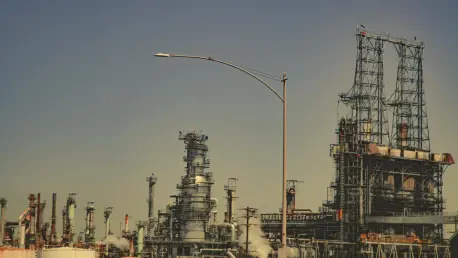As winter approaches, France finds itself grappling with a mounting energy challenge that could test the resilience of its gas supply chain, especially with a critical pipeline outage and disruptive labor disputes at key liquefied natural gas (LNG) terminals raising alarms about the country’s ability to meet heightened demand during the coldest months. This situation is particularly concerning given Europe’s increasing reliance on LNG to ensure energy security amid fluctuating global supplies. The convergence of technical failures and human factors paints a complex picture of vulnerability, with significant implications for both domestic consumption and regional stability. While some mitigation efforts are underway, the scale of the disruptions suggests that innovative solutions and strategic planning will be essential to navigate the coming season. This unfolding crisis highlights not only the fragility of critical infrastructure but also the broader challenges facing energy-dependent nations in maintaining a steady flow of resources.
Navigating the Pipeline Outage Challenge
The heart of France’s LNG supply crisis lies in the outage of the Rhone pipeline, a vital conduit with a capacity of 160 gigawatt hours per day, which channels gas from the Fos-sur-Mer terminals into the national transmission network. Following an unspecified incident, the pipeline has been rendered inoperable, with operator NaTran confirming that repairs will not be completed until after winter. This disruption is projected to reduce total gas supplies by around 43.5 terawatt hours, equivalent to roughly 11 days of winter demand. Such a shortfall severely limits energy flexibility at a time when consumption typically surges. According to data from the EU gas network operator ENTSOG, flows through the affected entry point are now capped at approximately 239 gigawatt hours per day, slashing Fos’s technical capacity by half. This bottleneck underscores the fragility of relying on single points of infrastructure and raises pressing questions about how alternative routes or storage solutions might compensate for the loss during peak demand periods.
Addressing Labor Disruptions and Market Stability
Compounding the infrastructure woes are ongoing labor disputes at major LNG terminals, namely Fos-sur-Mer and Montoir-de-Bretagne, where strikes over pay have disrupted cargo deliveries for weeks. Operated by Elengy, these terminals have seen intermittent flows, with some resumption at Fos Cavaou following urgent requests from NaTran to ease supply risks. Although the strikes are slated to end soon, union representatives have indicated that further stoppages could occur depending on upcoming negotiations. Analysts, including Yuriy Onyshkiv from LSEG, suggest that resolving these disputes could inject much-needed predictability into the market as colder weather looms. Meanwhile, efforts to offset declines at Fos have seen increased flows from other terminals like Dunkirk and Montoir, as noted by S&P analyst Diane Elijah. Despite these adjustments, the persistent Rhone pipeline issue continues to overshadow short-term gains, limiting regasification capacity and posing a sustained threat to supply security across the region. Looking back, the response to these challenges reflects a critical need for robust contingency plans and stronger dialogue between stakeholders to prevent future disruptions. Moving forward, prioritizing infrastructure resilience and fostering labor agreements will be key steps in safeguarding energy stability for the winters ahead.









